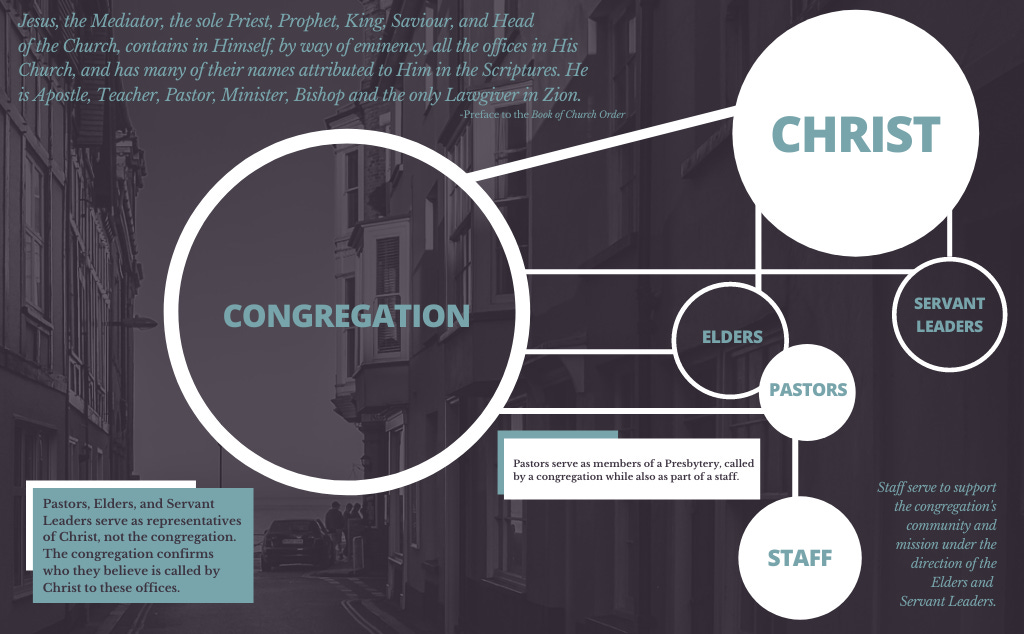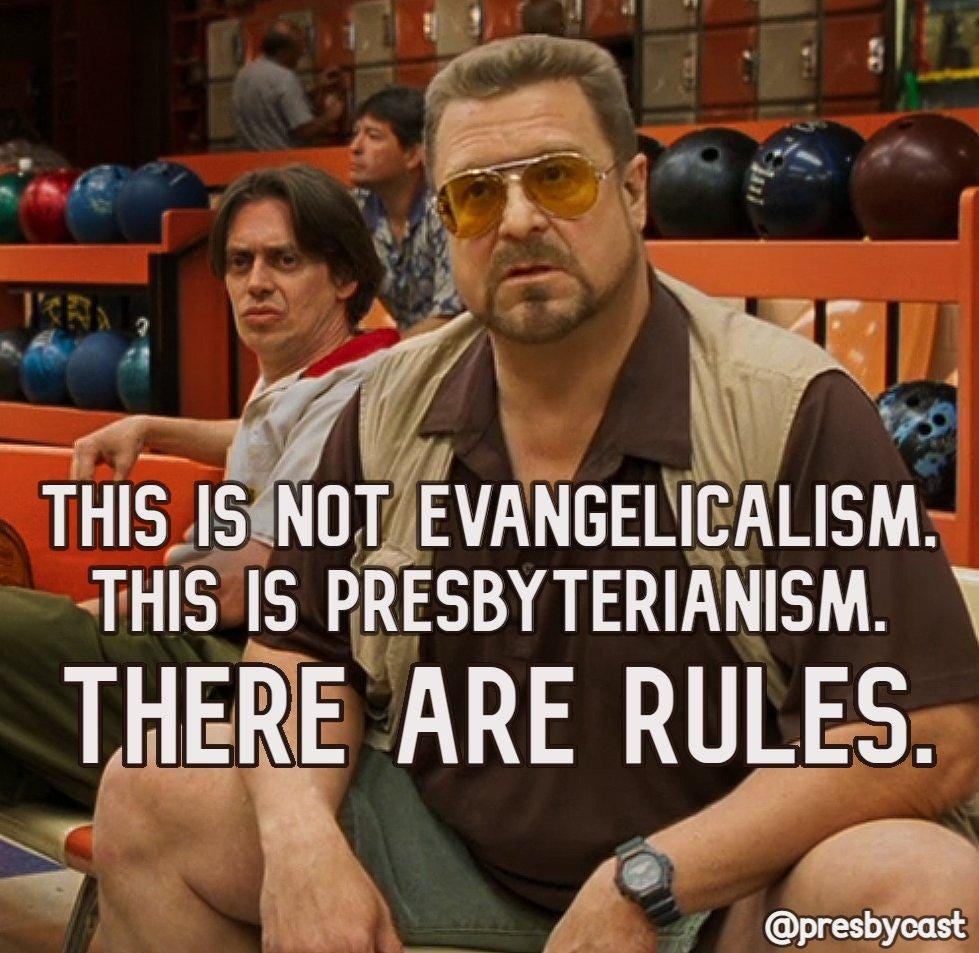The polity of the Presbyterian Church in America knows only two offices,1 and those offices are ordained. The Book of Church Order makes this abundantly clear:
7-2. The ordinary and perpetual classes of office in the Church are elders and deacons. Within the class of elder are the two orders of teaching elders and ruling elders. The elders jointly have the government and spiritual oversight of the Church, including teaching. Only those elders who are specially gifted, called and trained by God to preach may serve as teaching elders. The office of deacon is not one of rule, but rather of service both to the physical and spiritual needs of the people. In accord with Scripture, these offices are open to men only.
7-3. No one who holds office in the Church ought to usurp authority therein, or receive any official titles of spiritual preeminence, except such as are employed in the Scriptures. Furthermore, unordained people shall not be referred to as, or given the titles of, the ordained offices of pastor/elder, or deacon.
The PCA loves many things—white-soled brown leather dress sneakers, saying “father and brothers,” leather satchels, the Gettys—but little do we love more than creativity. OK, maybe we love contextualizing as much as we love creativity…especially when the latter is in service of the former. The problem is that things get…well…disorderly and confusing for all involved when creative eclecticism is applied to church polity—the offices and organization of the church. And disorderly is not good, fathers and brothers, when the context is a presbyterian church.
The basics of presbyterian church order are not complicated, and the doctrines of office and ordination are certainly basic…and essential. Two offices seem simple enough, but ecclesial creativity can yield novelties that are not quite reducible to a flow chart or infographic, with this one from a PCA church:
The church in question seems to revere the PCA Book of Church Order (even quoting from its excellent preface—a rarity!), but the particular plurality of “offices” depicted are plainly at variance with the BCO, both in number and in definition.
“Pastors, Elders, and Servant Leaders…offices.”
Back to BCO 7-2, “The ordinary and perpetual classes of office in the Church are elders and deacons. Within the class of elder are the two orders of teaching elders and ruling elders.” The graphic and text imply or assert at least two wrong things: that pastor and elder are two distinct offices and that “servant leader” is an office at all. Now, to be sure, pastor is common shorthand for one of the two classes of elder—teaching elder. But all elders are elders: “pastors” are elders and ruling elders are elders. Elder, unmodified, is unclear.
One of the reasons terminology matters is because the BCO is not just for professional presbyterians. Imagine the confusion of a member (maybe one under discipline or appointed or nominated for some office or role) who opened a PDF of the BCO and tried to square the infographic with the text. Even more confused would be the poor member who did a ctrl-f for “servant leaders,” since it’s just not there. Most profoundly confused would be the man or woman elected or appointed as a “servant leader” (a co-ed group at the church in question) who asked himself or herself, “Am I an officer?”2 The infographic says, “yes.” The BCO says, “no”…unless you are a man who has been nominated and elected by the congregation and ordained by the laying on of hands as a deacon. If that were the case, “servant leader” would be a non-standard term for deacon that conceals rather than reveals the true nature of the ordained office. If the “servant leader” in question is not ordained, then that person is no officer at all.
Another reason terminology matters is that actual ordained officers have rights, privileges, and responsibilities that differ from those of unordained members. A session could arbitrarily select or remove a person with a made-up, office-like title or role and lacks ordained, official status.
As we often say, “honesty is the best polity.” So what’s to conceal? And what does all of this reveal? Maybe what is revealed is an ecclesial “optionality” that sees churches (or sessions) quite literally making it up as they go along, curating their own polity experience. It reveals a dissatisfaction with the order of the Presbyterian Church in America as it now exists…contrary to the third ordination vow taken by all PCA officers, which says they “approve of the form of government and discipline of the Presbyterian Church in America, in conformity with the general principles of biblical polity.” Of course, some may aver that they “generally approve” of our polity. That’s all well and good, but has the PCA stated that it’s OK to “generally comply” with the BCO?
Now to the math question. How many offices does a church whose polity is represented by the infographic have—one, two, or three?
One - Following the BCO definition, there would be one office present at the church if the teaching elders and ruling elders are ordained (being one office) and no deacons are ordained. This is the most likely correct answer.
Two - This is possible if the males (or some of the males) on the “servant leader” team are properly ordained and installed. It is increasingly common to find PCA churches with no ordained deacons. Some even proclaim this publicly…as at last year’s General Assembly debate over the final ratification of the officer titles amendment (BCO 7-3, above).
Three - This is impossible, although the infographic seems to assert the contrary: pastors, elders, and servant leaders.
Is your head spinning yet? There is no doubt that some of the discipline processes in the BCO are mystifying and byzantine, but the bare bones of our polity—officers and courts—are not. And they should not be made so by our creative attempts to contextualize or reinvent.
(We did not address the question of staff in this piece but have previously pleaded for simple, officer-led governance as compared to staff-led governance.)
Many presbyterian churches are three-office: pastors, (ruling) elders, and deacons. The PCA is two-office and has studied the issue.
Imagine being told that you’re an officer only to find out that the provisions do not (and indeed cannot) apply to you since the “office” does not exist or because you were never duly elected and ordained to office.









Where is that infographic from?